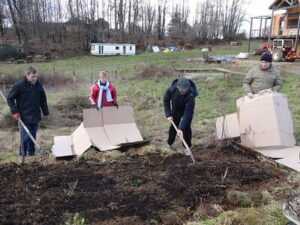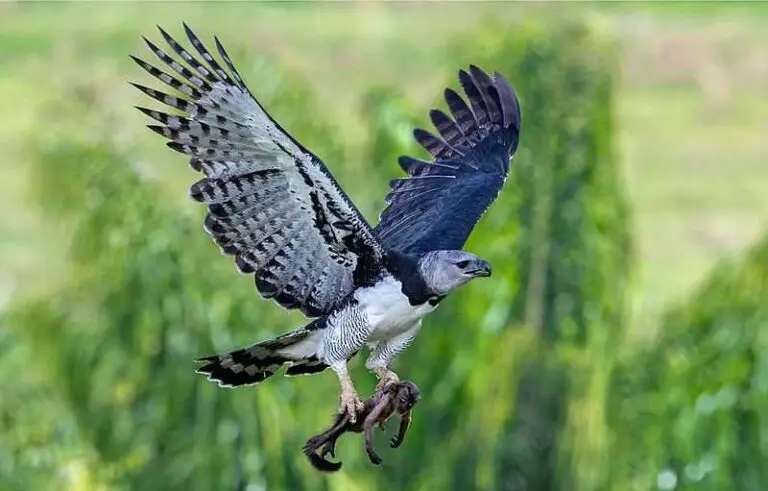5 Benefits of Permaculture Explained
Benefits of permaculture are; agricultural biodiversity, long-term cost savings, self-sufficiency, sustainability, and high-quality production.
This article discusses the benefits of permaculture, as follows;
1). Agricultural Biodiversity (as one of the Benefits of Permaculture)
Biodiversity is one of the foundations of ecologic resilience in natural ecosystems like forests, grasslands, deserts and tundras [2].
In permaculture, agricultural biodiversity is usually a byproduct of the efforts made to replicate natural ecologic trends and conditions.
Sustainable agricultural practices and principles like composting, crop rotation, and agroforestry, which are often implemented on permacultural farms, help to diversify the organic populations and processes on the farm.
For example, crop rotation and rotational grazing allow multiple species of crops and livestock to thrive simultaneously, while composting supports the multiplication of soil microbe species.
Through biodiversity, the farm becomes resilient to the influence of various environmental impacts and factors that could easily affect conventional farms. This helps the farm to acquire a significant level of stability or ‘permanence’, which is the goal of permaculture.
2). Effective Waste Management
In permaculture, resources are conserved through effective waste management, which is itself based on a multidimensional approach that collects and utilizes waste produced in various sections of the farm.
Waste management in permaculture can be described using any of various terms and concepts like recycling, soil conservation, water conservation, sustainable production, and waste-to-energy conversion.
Soil and water conservation can be achieved through various means including rainwater harvesting, conservation tillage, mulching, greywater harvesting and recycling, and contour farming.
Organic waste can be managed through composting or biofuel production by anaerobic digestion, pyrolysis, or gasification, among others.
In terms of efforts to manage waste effectively, permaculture can be considered similar to biodynamic farming, as it aims to reduce dependence on the external environment for resources, by recycling all available materials within the farm.
The approach helps to mitigate risk of resource depletion in the agricultural sector, and is ideal for circular economy.

3). Long-term Cost Savings (as one of the Benefits of Permaculture)
The capital investment in permacultural farms can be high, due to demand for time and labor, as well as material and intellectual resources.
However, in the long-term, permaculture can save considerable cost compared to conventional farming.
One of the reasons for this is lower maintenance requirements.
Since permcaultural farms are designed to be self-sufficient and ecologically stable, the need for human interference in the form of farm maintenance, is less than that of conventional farms.
Permaculture also saves cost on chemical fertilizer, herbicides and pesticides, which are a major source of expenses in conventional farming [1].
Lastly, high-quality products from permacultural farms can be sold and used to gain returns on investment. It is however important to note that the high cost of these products is considered to be one of the disadvantages of permaculture.
4). Self-sufficiency and Sustainability
When properly implemented, permaculture will ultimately make the farm self-sufficient.
The self-sufficiency of permacultural farms is a direct outcome of their replication of natural ecologic systems.
By conserving resources, recycling waste, minimizing toxic materials and unsustainable methods, and relying on renewable bioenergy and natural resources, permaculture reduces the dependence of the agricultural ecosystem on its external environment.
Permaculture also makes the farm and its soil, water, crops and livestock; to become resilient and resistant to external (and internal) influences that could disrupt the ecologic equilibrium of conventional farms.
In cases where electricity or heat is needed on the farm, biomass from agricultural waste can be converted to biofuel which may serve as and energy source. Otherwise, renewable energy systems like solar panels and wind turbines can be integrated with the farm.
Self-sufficiency makes permaculture highly reliable compared to conventional agriculture, and reduces the risk or impact of pests, weeds and diseases.
5). High-Quality Production (as one of the Benefits of Permaculture)
Both crop and livestock products from permacultural farms are of high quality, and generally healthier than conventional agricultural products.
This is because such products are wholly organic, and have no or minimal chemical input in the form of fertilizer, pesticides, herbicides, or preservatives.
Growing crops and livestock under purely organic conditions leads to safer and healthier products, with a higher nutritional and economic value.

Conclusion
The benefits of permaculture include;
1. Agricultural Biodiversity
2. Effective Waste Management
3. Long-term Cost Savings
4. Self-sufficiency and Sustainability
5. High-Quality Production
References
1). Bhandari, D.; Bista, B. (2029). *Permaculture: A Key Driver for Sustainable Agriculture in Nepal.” International Journal of Applied Sciences and Biotechnology 7(2):167-173. Available at: https://doi.org/10.3126/ijasbt.v7i2.24647. (Accessed 24 October 2022).
2). Oliver, T. H.; Heard, M. S.; Isaac, N. B.; Roy, D. B.; Procter, D.; Eigenbrod, F.; Freckleton, R.; Hector, A.; Orme, D. L.; Petchey, O. L.; Proença, V.; Raffaelli, D.; Suttle, B.; Mace, G. M.; Martín-López, B.; Woodcock, B. A.; Bullock, J. M. (2015). “Biodiversity and resilience of ecosystem functions.” Trends in Ecology & Evolution 30:673-684. Available at: https://pubmed.ncbi.nlm.nih.gov/26437633/. (Accessed 24 October 2022).




